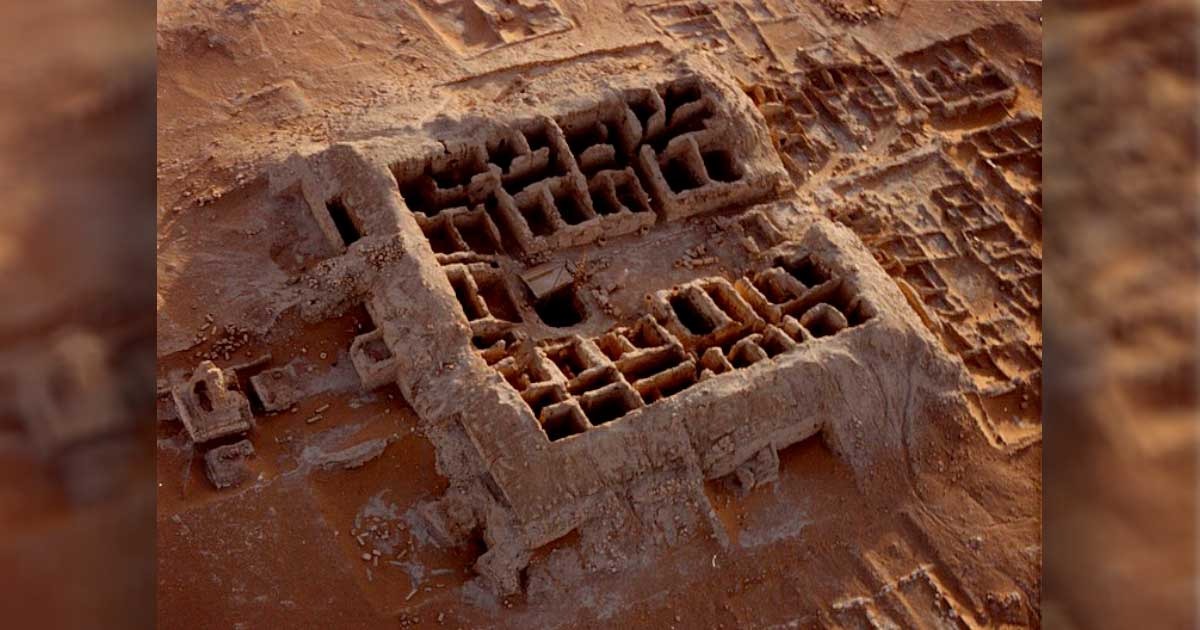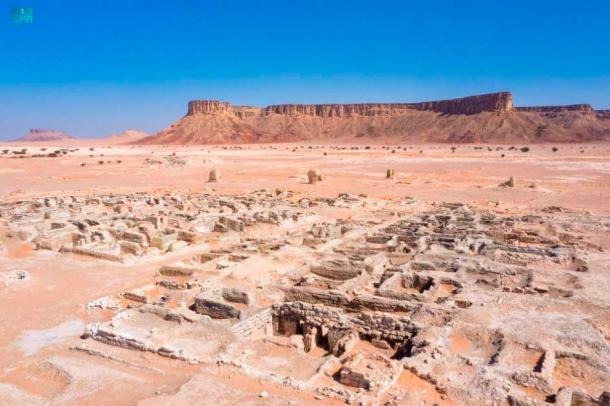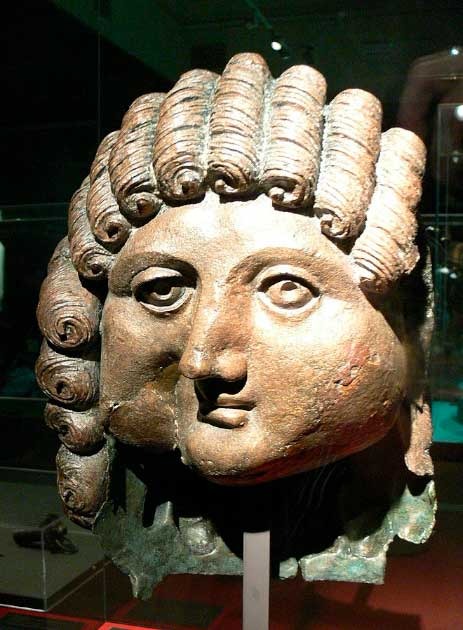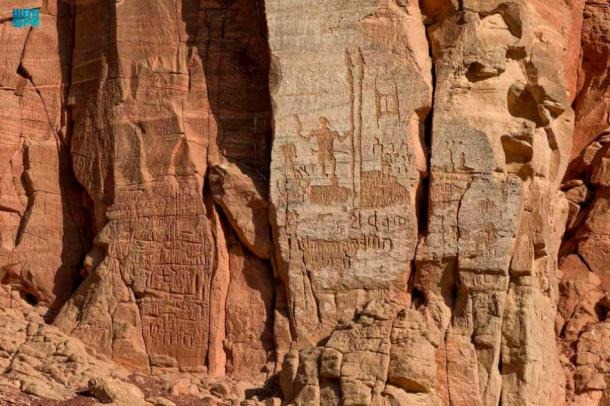The once magnificent capital of the Kingdom of Kindah, Al-Faw south west of Riyadh in Saudi Arabia has been the subject of a project spearheaded by the Saudi Heritage Commission, headed by a Saudi led international scientific team. The Kindah Kingdom was a confederation of north and central Arabian nomadic tribes in the 5th and 6th centuries. Historically, it’s recognized as the first nomadic Arabian monarchy.

Now, a team of researchers has utilized state of the art technology to survey the site and has made some remarkable finds including the remains of an 8,000 year old Neolithic settlement, and a stone altar as well as adding 2,807 graves from different time periods to the existing list. These graves have been documented and classified into six distinct groups, as per a press release by the Saudi Press Agency.

Experts used photography, drone topographic surveying and geophysical surveying to discover the findings. ( SPA)
The technology employed included high-quality aerial photography, guided drone footage that utilized ground control points, a topographic survey, remote sensing, ground-penetrating radar, laser scanning, and geophysical surveys. In additionally, extensive walkover surveys were also used in a bid to leave no stone unturned.
Inscriptions and Worship: Challenging the Idea of Monotheism
Al-Faw is located on the edge of Al-Rub’ Al-Khali (the Empty Quarter), on the route that connects the contemporary cities of Wadi Al-Dawasir and Najran. The stone temple, which is rock-cut, is perched on the edge of Mount Tuwaiq on the east of Al-Faw. It was a center where local people would have practiced rituals and ceremonies in ancient times.
In addition, several devotional inscriptions were also found – they question our understanding of the religion and belief systems of whichever community inhabited the site. Of these inscriptions, one is the Jabal Lahaq sanctuary that is addressed to the god Kahal, the local deity.

Head of a man from Qaryat al-Faw (1st century BC). Department of Archaeology Museum, King Saud University, Riyadh. (Wolfgang Sauber/ CC BY-SA 3.0 )
It was commissioned by Wahb Allat (understood by looking at the letters WHBLT), who was from the family of Malha (gleaned from the letters MLHT). They were self-proclaimed locals of the city of Al-Jarha (signing off as Guerra on the inscription). The researchers speculate that this inscription could indicate a possible trading and economic relationship between the cities of Al-Faw and Al-Jarha. Perhaps it could be an indicator of religious tolerance or the worship of the deity Kahal by the residents of Al-Jarha.
This could open up the possibility of monotheistic practice in the Middle East, or Western Asia, which has traditionally been considered the 𝐛𝐢𝐫𝐭𝐡place of the monotheistic Abrahamic religions – Christianity, Islam, and Judaism. It also challenges the idea of the opposition to idol worship and iconoclasm that Islam is traditionally opposed to. These are preliminary observations which require further analysis, according to the researchers.
Irrigation, Agriculture, and Other Complexities
The site also revealed the foundations of four massive buildings with their corner towers, that could potentially have functioned as resting places for weary travelers and their caravans. This reinforces the idea of a trade-based relationship, particularly after assessing the architecture, internal plans, and open-air courtyards, reports Zawya.
Other finds opened up the possibility of the existence of a number of complexes. A complex irrigation system was found that had canals and water cisterns. There were hundreds of pits dug to direct rainwater to the agricultural fields, providing an explanation for how local residents countered the harsh, arid climate. The surveys and remote sensors helped reveal the presence of widespread agricultural fields that grew a variety of crops, reports Asharq Al-Awsat .
Finally, a series of rock art and other inscriptions on Mount Tuwaiq were also found – they told the tale of a man called Madhekar Bin Muneim. They also illustrated daily scenes of rituals like hunting, travel, and battle. The results of these meticulous surveys, compiled over 50 years, have been published in a seven-volume book.

Rock drawings found etched on Tuwaiq Mountain that depict daily activities, including hunting, traveling, and fighting. ( SPA)
There is clearly a reason why the Arabian peninsula is often called the 𝐛𝐢𝐫𝐭𝐡place of the first settled societies. Here, human societies were some of the first to achieve complexities in agriculture, architecture, gathering, and other survival techniques that have come to be associated with comparatively sedentary lifestyles.





